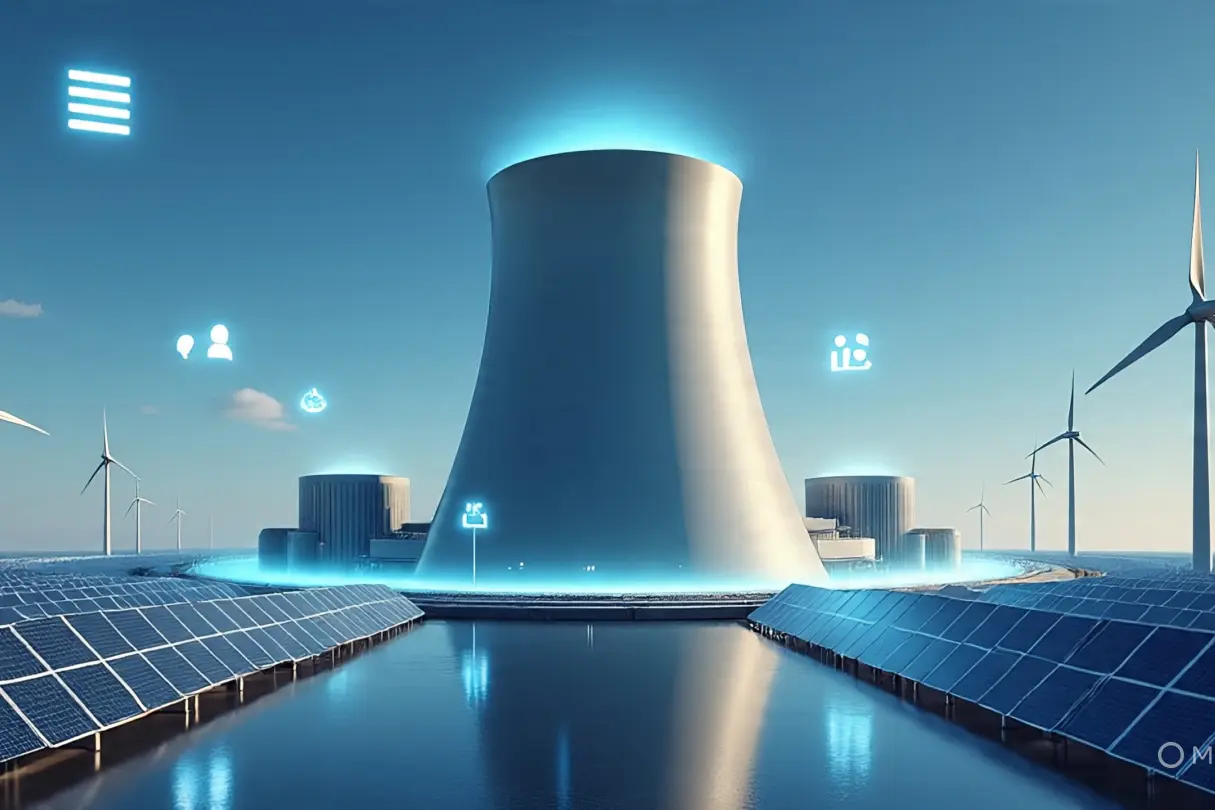🌱 Introduction: A Nuclear Comeback?
For decades, nuclear power has quietly faded from America’s energy spotlight. Aging reactors, public fear after disasters, and skyrocketing costs pushed it aside in favor of cheaper natural gas and fast-growing renewables. But two major forces are reshaping the conversation: climate change and the energy demands of artificial intelligence.
With more than 100 nations setting net-zero emissions targets by 2050, nuclear is back on the table—not because it’s perfect, but because the clean energy math doesn’t work without it. It’s zero-carbon, available 24/7, and already supplies about 20% of the U.S. electricity grid.
🔁 A Look Back: America’s Nuclear Past
The U.S. first harnessed nuclear energy for commercial use in the 1950s. By the 1970s, over 100 reactors were humming across the country. But the Three Mile Island accident in 1979 triggered a decades-long freeze on growth. Between 2013 and 2022, 13 reactors shut down, mainly due to high operating costs and growing competition from renewables.
Today, the U.S. runs 94 reactors. Most are aging, but still vital. Restarting the momentum means not only keeping the lights on at existing plants—but also innovating for the next generation.
🏗️ Maintaining America’s Nuclear Backbone
Oconee Nuclear Station in South Carolina is one of the oldest nuclear plants in the U.S. Initially licensed for 40 years, it’s now been extended to run for 80 years or more.
In the 2010s, this wasn’t the norm. The Fukushima disaster in Japan rattled the industry. Cheap natural gas and solar made nuclear look like an overpriced relic. But that sentiment is shifting fast. Utilities are now reinvesting in older reactors, giving them a second life as pressure mounts to decarbonize.
🧱 New Construction, Old Challenges
Building new nuclear plants hasn’t been easy. Case in point: the Vogtle expansion in Georgia. Initiated under President George W. Bush’s Nuclear Power 2010 Program, it was completed in 2024—seven years late and over twice its $14 billion budget.
Despite the setbacks, Vogtle Units 3 and 4 are seen as proof that nuclear construction in the U.S. can happen. Still, few utilities are eager to foot the bill for massive new plants. With costs soaring into the tens of billions, investors are cautious.
🔬 Small Modular Reactors: The Next Big Thing
Enter SMRs, or Small Modular Reactors—a potential game-changer. These compact nuclear units are designed to be mass-produced in factories, transported by truck or barge, and assembled on-site.
Startups like Kairos Power are developing molten salt reactors that use fluoride salt instead of water. Their first demo unit is slated for construction at Oak Ridge National Lab. Other big names in the SMR space include TerraPower, founded by Bill Gates, and the now-defunct NuScale project, which folded in 2023 due to inflation and high interest rates.
If successful, SMRs could cut costs and timelines drastically—paving the way for a new era of safe, flexible nuclear power.
🏛️ Government’s Role in Nuclear’s Future
Federal support remains critical. Licensing, regulatory approval, and especially loan programs determine whether new nuclear projects ever break ground.
The Department of Energy’s Loan Programs Office plays a central role in funding ambitious new builds. But ultimately, it’s utility companies who must take the risk. Republican administrations have historically backed nuclear, though Trump’s track record has been mixed.
The optimism is real—but so are the barriers. It’s still unclear if the recent wave of enthusiasm will translate into more construction or just more conversation.
⚖️ The Environmental Debate
Not everyone is on board. Groups like Greenpeace and Sierra Club still oppose nuclear energy, citing the risks of meltdowns, radioactive waste, and long-term environmental impact. Even low-level exposure to radiation is linked to cancer, critics argue.
They advocate for a mix of wind, solar, efficiency, and energy storage, believing these technologies can scale faster and safer than atomic power.
🔮 What Lies Ahead
Just a few years ago, nuclear coverage focused on shutdowns. Now, it’s about which plants are reopening, who’s extending licenses, and what startups will launch the first next-gen reactor.
Experts foresee the reactivation of three retired nuclear plants by 2030 and the first operational SMRs soon after. Meanwhile, $7.1 billion has been raised globally to develop fusion energy—a potentially safer, more powerful alternative to fission.
Nuclear may not be the silver bullet, but in the fight for carbon neutrality, it’s becoming a tool the world can’t afford to ignore.




